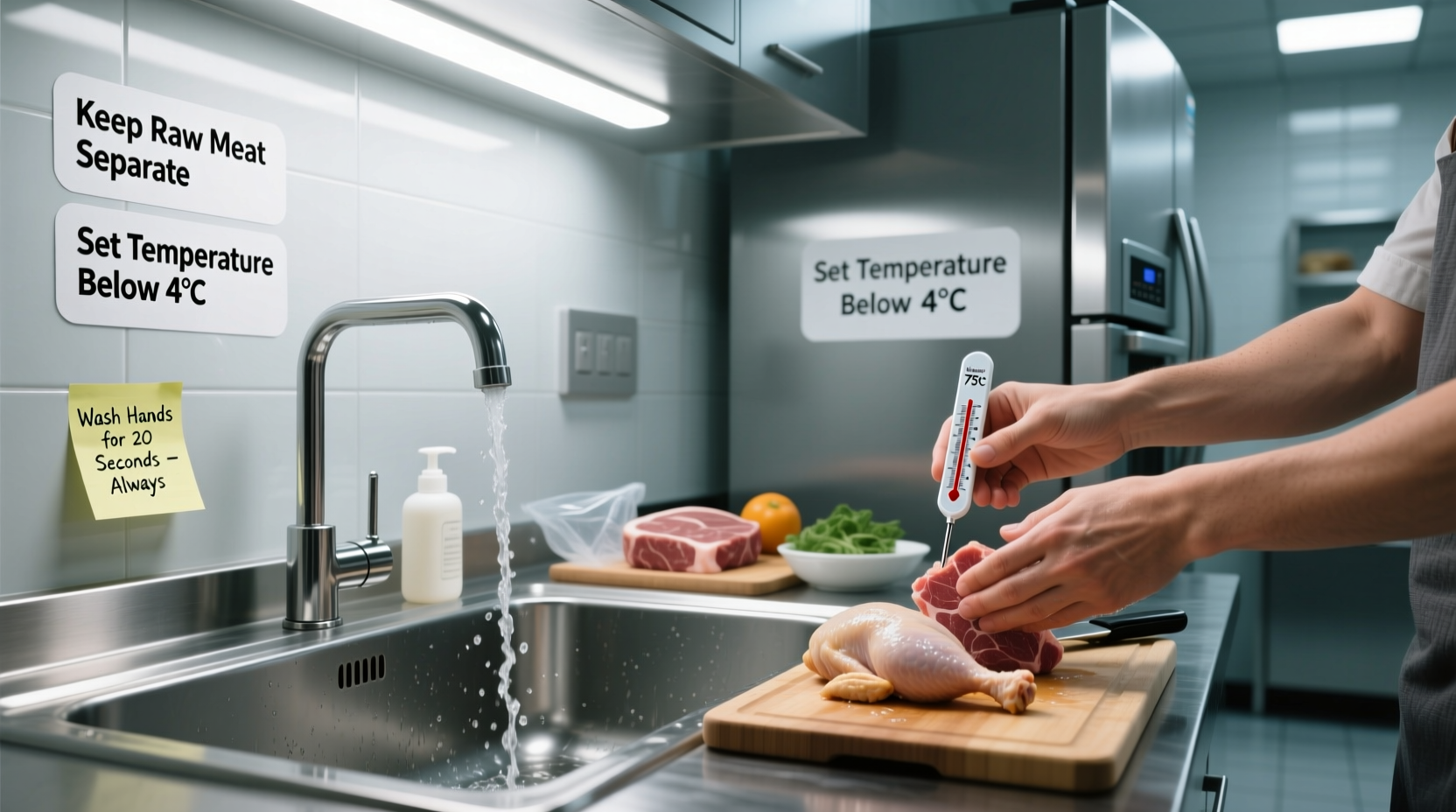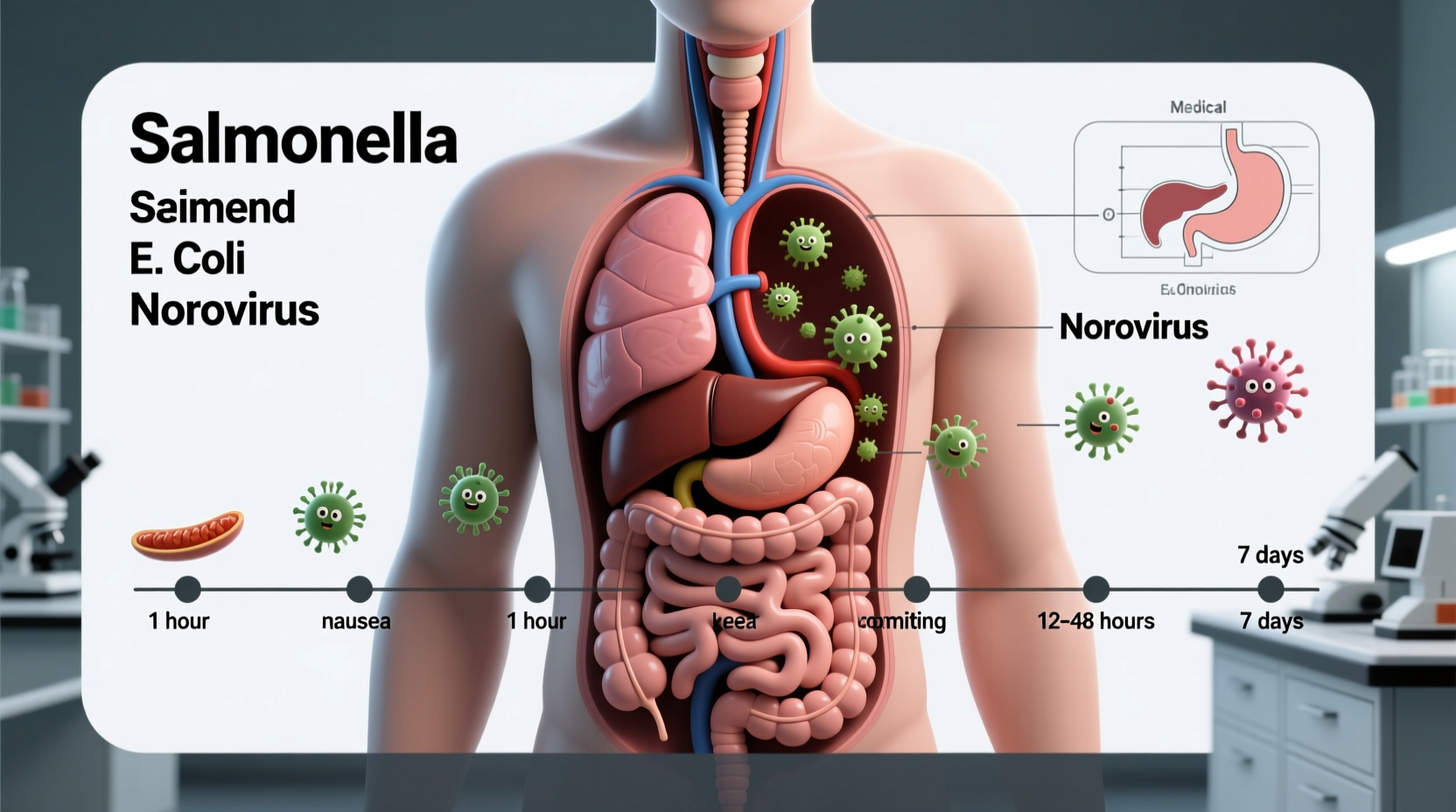If you're currently experiencing nausea, vomiting, or diarrhea after eating, you're probably wondering exactly how long you'll feel this way. Understanding the typical food poisoning timeline can help you manage symptoms and know when to seek medical attention. This guide provides evidence-based information on recovery periods for different types of foodborne illnesses, backed by medical research and health authority guidelines.
Understanding Food Poisoning Timelines by Pathogen Type
The duration of food poisoning depends primarily on which microorganism caused your illness. Different pathogens have distinct life cycles in your body, affecting how long symptoms persist. Recognizing the specific culprit can help you anticipate your recovery timeline.
| Pathogen Type | Incubation Period | Typical Duration | Common Sources |
|---|---|---|---|
| Norovirus | 12-48 hours | 1-3 days | Raw shellfish, contaminated water, ready-to-eat foods |
| Salmonella | 6-72 hours | 4-7 days | Raw eggs, poultry, meat, unpasteurized milk |
| Staphylococcus aureus | 30 min-8 hours | 1-2 days | Foods handled by infected persons (salads, sandwiches) |
| Campylobacter | 2-5 days | 2-10 days | Raw or undercooked poultry, unpasteurized milk |
| E. coli (STEC) | 3-4 days | 5-10 days | Undercooked ground beef, raw produce, unpasteurized juice |
| Listeria | 1-4 weeks | Days to weeks | Ready-to-eat deli meats, soft cheeses, refrigerated pâtés |
This comparison shows why understanding the specific cause of your food poisoning matters. According to the Centers for Disease Control and Prevention, norovirus accounts for approximately 50% of all foodborne illness cases in the United States, making it the most common cause of short-duration food poisoning.
When Symptoms Typically Begin and Peak
Your food poisoning journey follows a predictable pattern regardless of the specific pathogen:
- Exposure: Consuming contaminated food or beverage
- Incubation period: Time between exposure and first symptoms (varies by pathogen)
- Symptom onset: Initial nausea, stomach cramps, or diarrhea
- Peak intensity: Usually 24-48 hours after symptoms begin
- Recovery phase: Gradual improvement over several days
Most people experience the most severe symptoms during the second day of illness. The Mayo Clinic notes that proper hydration during this peak period significantly impacts recovery time and can prevent complications that might prolong your illness.

Factors That Extend Food Poisoning Duration
Certain conditions can prolong your recovery beyond the typical timeline. Be aware of these duration-extending factors:
- Age: Infants, young children, and adults over 65 often experience longer illness durations
- Immune status: Those with compromised immune systems may struggle to eliminate pathogens
- Pre-existing conditions: Diabetes, kidney disease, or inflammatory bowel disease can complicate recovery
- Delayed treatment: Waiting too long to address dehydration can extend illness
- Specific pathogen strain: Some variants are more virulent than others
The World Health Organization reports that approximately 30% of food poisoning cases in high-risk populations last longer than one week due to these complicating factors. This context boundary is crucial for understanding your personal recovery timeline.
When to Seek Medical Attention Immediately
While most food poisoning cases resolve without medical intervention, certain warning signs indicate you should contact a healthcare provider:
- Symptoms lasting longer than 3 days without improvement
- Signs of severe dehydration (extreme thirst, dry mouth, little or no urination)
- Blood in vomit or stool
- Diarrhea lasting more than 2 days in adults or 24 hours in children
- Fever above 102°F (38.9°C)
- Neurological symptoms like blurred vision or muscle weakness
According to the FDA Food Code, approximately 1 in 6 Americans experiences food poisoning annually, but only about 200,000 require hospitalization. Knowing these thresholds helps prevent unnecessary emergency room visits while ensuring timely care when needed.
Speeding Up Your Recovery Process
While you can't eliminate food poisoning overnight, these evidence-based strategies can help shorten your illness duration:
- Hydrate strategically: Sip small amounts of clear fluids frequently rather than large quantities at once
- Try the BRAT diet (bananas, rice, applesauce, toast) once vomiting subsides
- Avoid anti-diarrheal medications during the initial 24 hours unless recommended by a doctor
- Rest completely for at least 48 hours after symptoms begin
- Avoid dairy, caffeine, alcohol, and fatty foods until fully recovered
Research published in the Journal of Food Protection shows that proper hydration management reduces average food poisoning duration by approximately 24-36 hours compared to those who become dehydrated. This practical approach delivers measurable improvement in recovery time.
Preventing Future Episodes of Food Poisoning
Understanding how long food poisoning lasts is important, but preventing it altogether is better. Implement these evidence-based prevention strategies:
- Cook poultry to 165°F (73.9°C), ground meats to 160°F (71.1°C), and fish to 145°F (62.8°C)
- Refrigerate leftovers within 2 hours (1 hour if temperature exceeds 90°F/32.2°C)
- Wash hands thoroughly with soap and water before handling food
- Use separate cutting boards for raw meats and produce
- Wash fruits and vegetables under running water before eating
The CDC estimates that following basic food safety practices reduces your risk of food poisoning by up to 70%. These practical steps address the most common causes of foodborne illness and can significantly impact how often you experience these unpleasant episodes.











 浙公网安备
33010002000092号
浙公网安备
33010002000092号 浙B2-20120091-4
浙B2-20120091-4